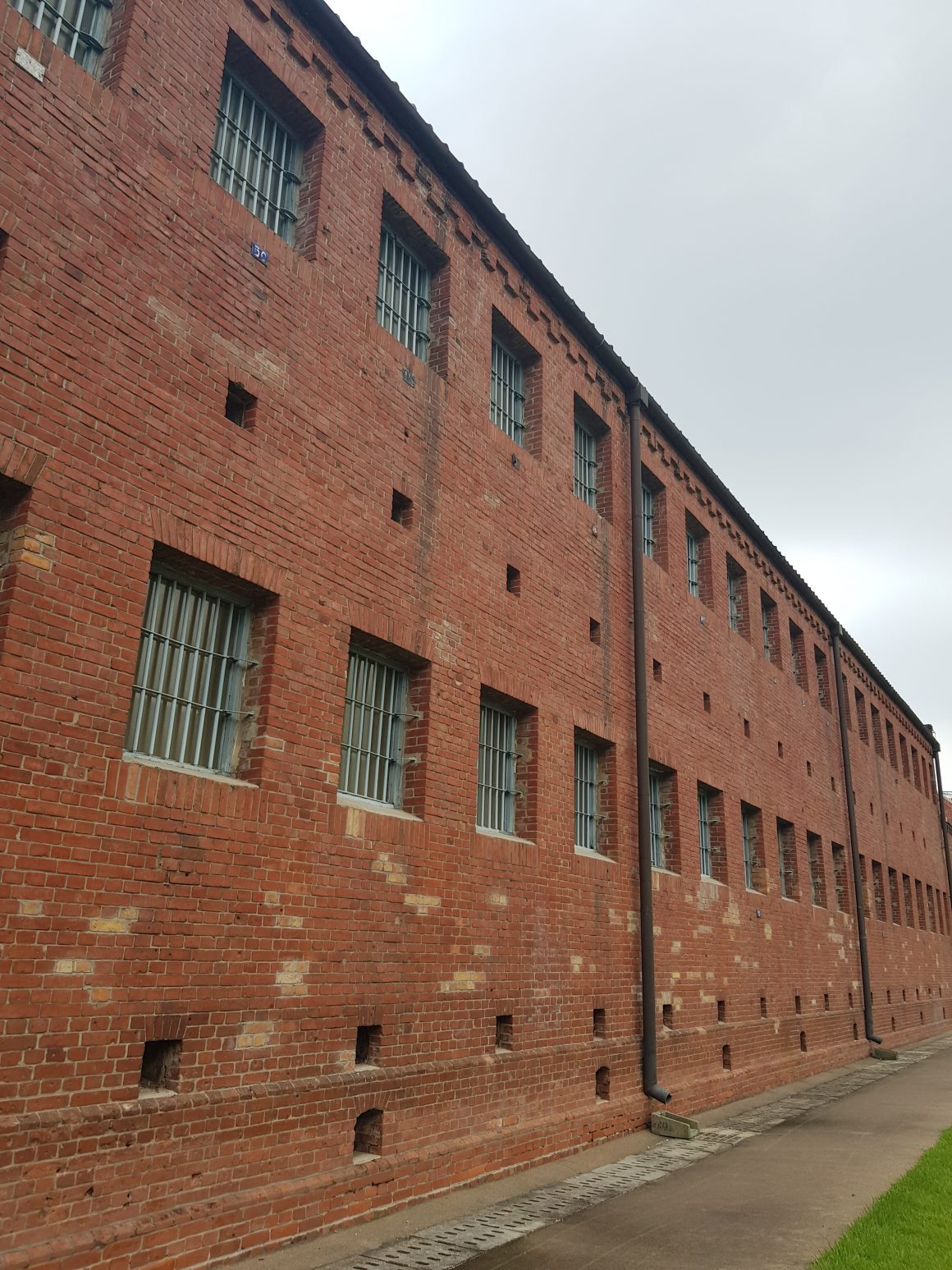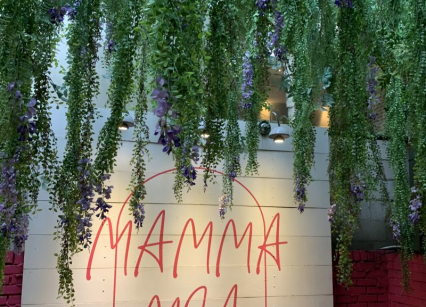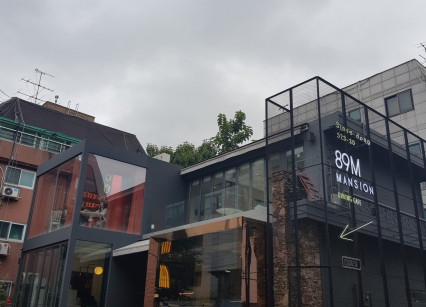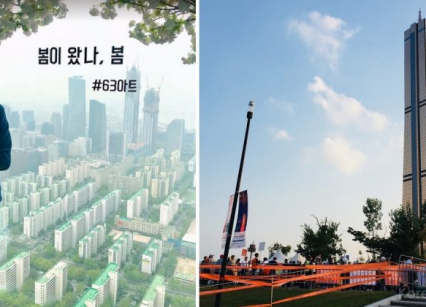Seodaemun Prison History Hall is a museum and memorial that honors those patriotic activists who dedicated their lives and fought for the country’s independence during the Japanese occupation. The building was previously a prison built by the Japanese administration to arrest house Korean independence movement activists. Seodaemun Prison History Hall serves a place to commemorate the ideals of independence and freedom, as well as reminding the public about the historical significance of the site.
An Introduction to Seodaemun Prison
Seodaemun Prison was opened on 21 October 1908 during the Japanese colonial period under the name of Gyeongseong Prison (경성감옥). The prison was then expanded and changed its name to Seodaemun Jail on 3 September 1912.
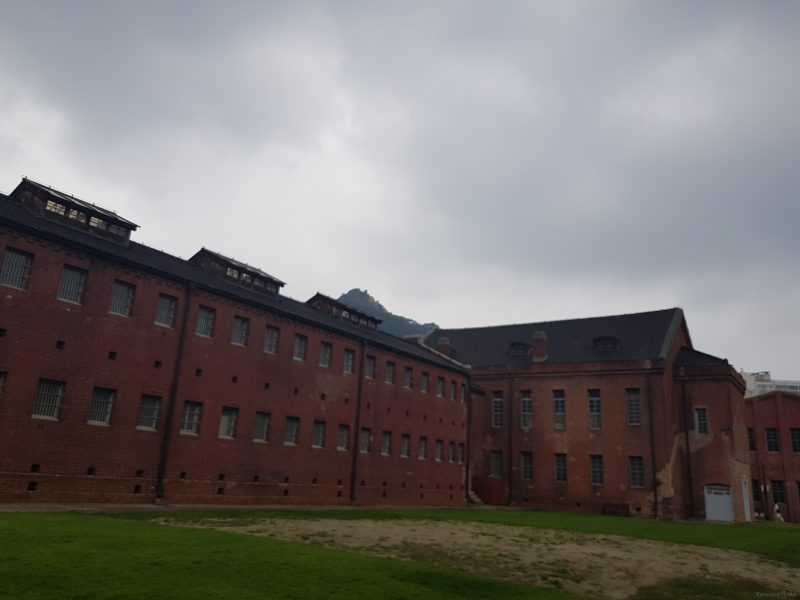
The name of the prison was changed again to Seodaemun Prison in 1923. After the colonial era ended in 1945, the prison was being remained in use by the South Korean government and was known the name Seoul Prison. The prison is then changed to Seoul Imprisonment Center in 1961 until it is replaced by the Seoul Detention Center in Uiwang-si in 1987. In 1998, Seodaemun Prison History Hall (National Historic Site No. 324) opened as a part of the Seodaemun-gu’s sanctification project. Seven of the prison’s original fifteen buildings are preserved as historical monuments.
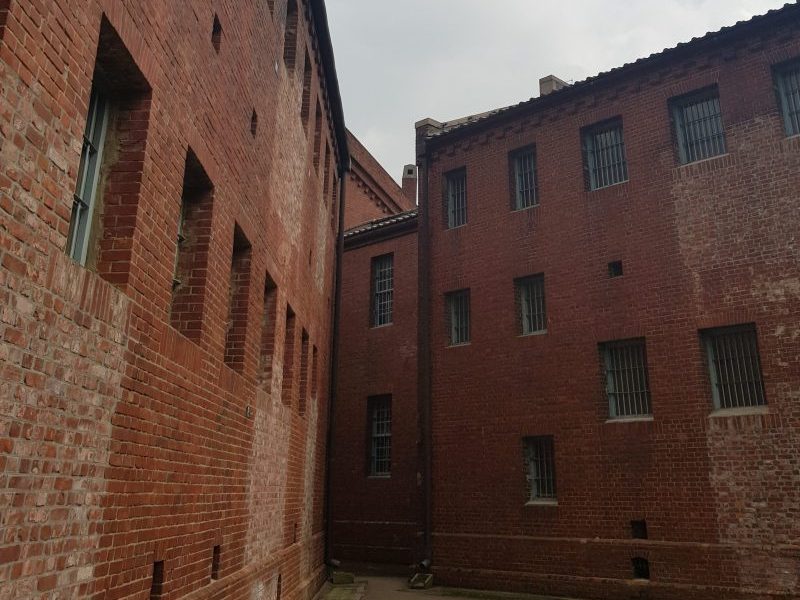
Highlights
Exhibition Hall
Stepping into Seodaemun Prison History Hall, the first thing you will come across is the Exhibition Hall. The 3-story exhibition hall was originally the Administration and Security Office which was used by the prison guards who supervised the prison.
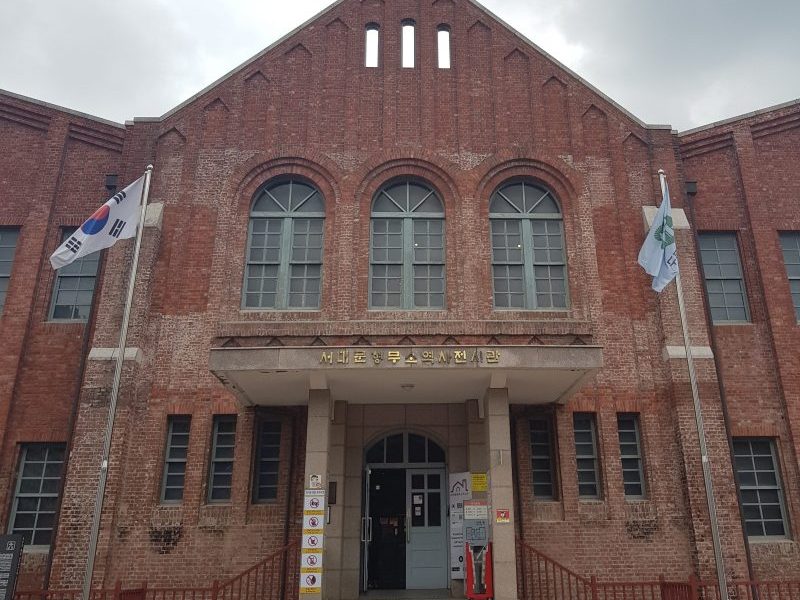
The first floor of the exhibition hall features history of the Seodaemun Prison. Materials related to the introduction of judicial system, installation and expansion of prisons in Korea are exhibited here.

The second floor of the exhibition hall exhibits relics related to the independence activist.
There is a memorial hall in which it is used to pay tribute to the deceased who sacrificed their lives for the country independence. There are 5000 prison records on independence activists placed on the wall.
The underground of the exhibition hall features the investigation room and interrogation room. Cruel tortures such as fingernail torture, water torture used by the Japanese are showed here.
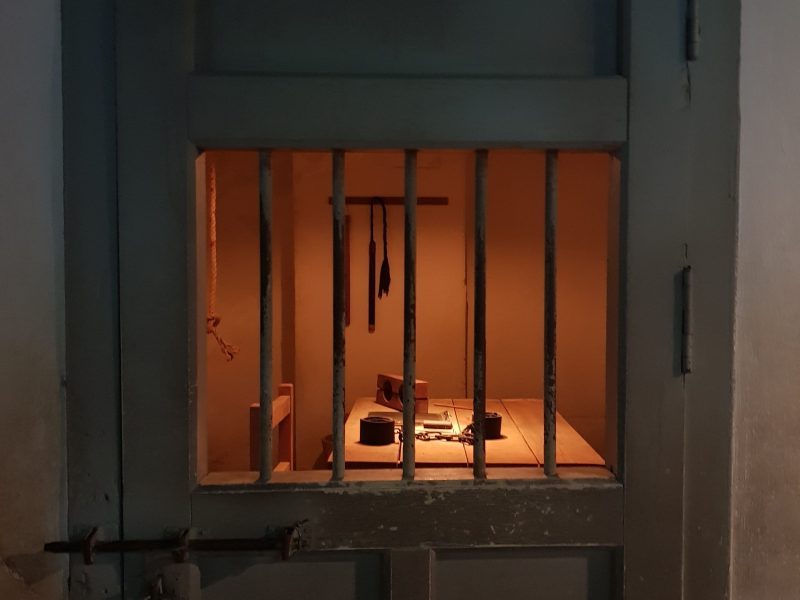
Central Prison Building
The Central Prison Building is where the prison guards who were in charge of supervising and controlling the prisoners worked.
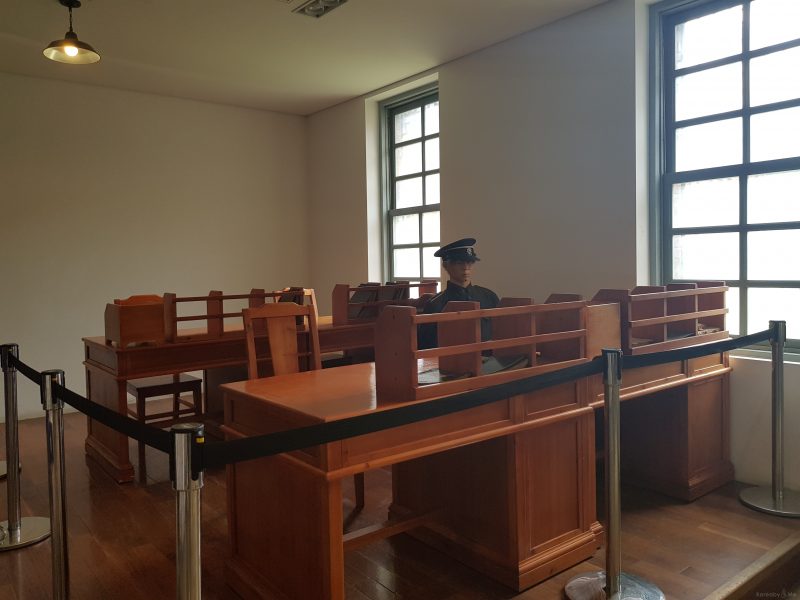
The prison guard can oversee all the prison buildings from here.
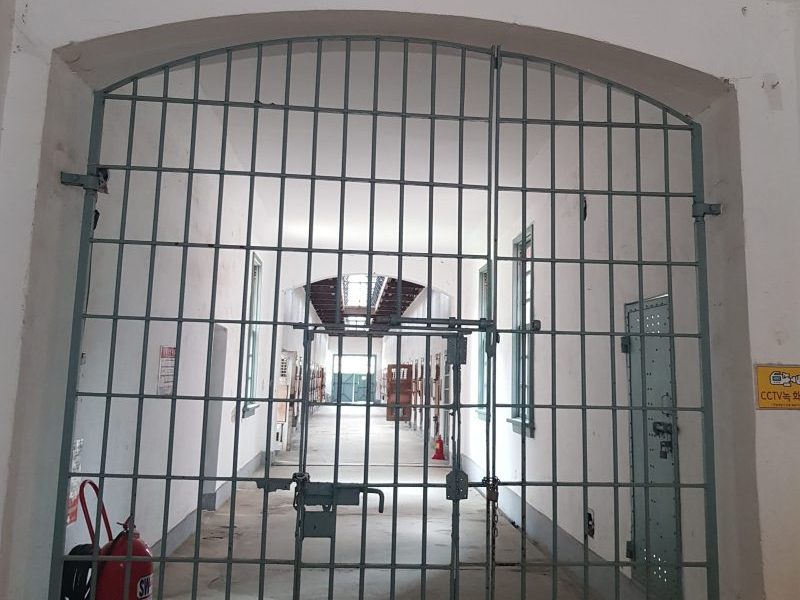
The building exhibits the organization of the Seodaemun Prison personnel, its arrangement and operation, as well as the daily life of prisoners in the prison.
Prison Buildings
There are three two-story prison buildings in the Seodaemun Prison History Hall, which are the Prison Building 12, Prison Building 11 and Prison Building 10. Each prison buildings contains 46 cells, 56 cells and 72 cells respectively.
Information of the activists is also being displayed in the prison cells.
You can notice there are small wooden sticks installed near the door of every prison cells. These devices are known as “Paetong”, which is used by the prisoners to inform the guard in case of any emergency. Inside the cell was a hole with a small rod. When the rod is pushed, the stick will fall out and drop onto the hallway, sending a visual signal to the guard.
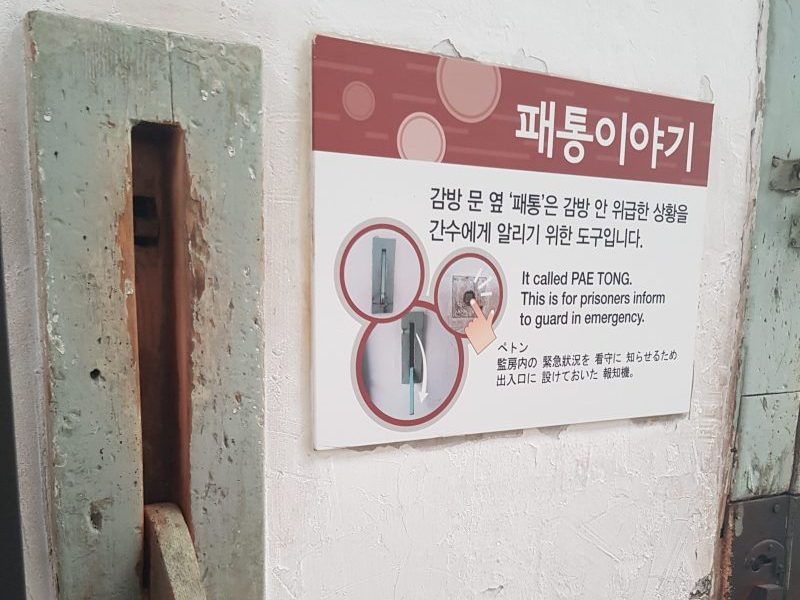
Artworks that pay tribute to the activists can also be found here.
Gyeokbyeokjang
Gyeokbyeokjang is an exercise facility used by the prisoners to do simple exercise. The structure is installed with lots of partition walls to prevent the prisoners from talking to each other and escaping.
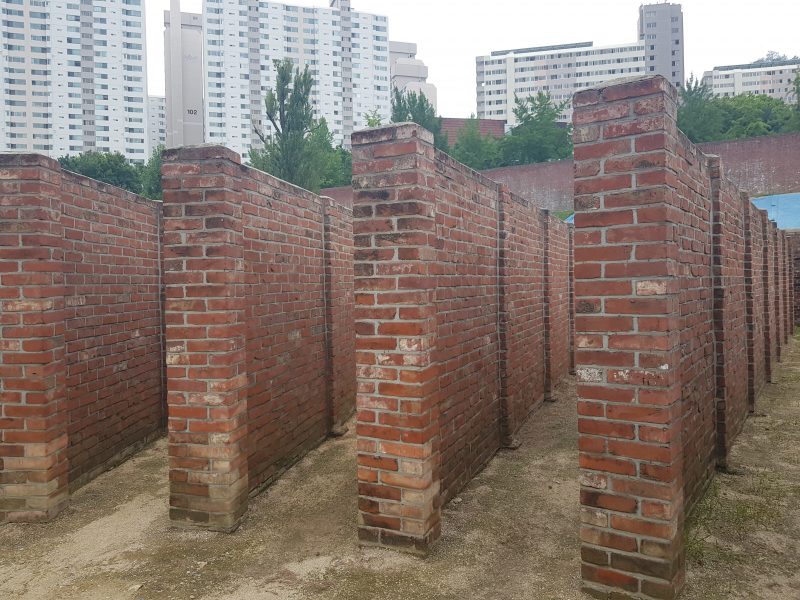
Execution Building and Corpse Removal Exit
The execution building was built in 1923 and many freedom fights were executed here by hanging. Photography is not allowed in the Execution Building.

Next to the execution building, there is a corpse removal exit. The hidden secret passage was used to move the dead bodies to a cemetery outside of the prison compound at night.
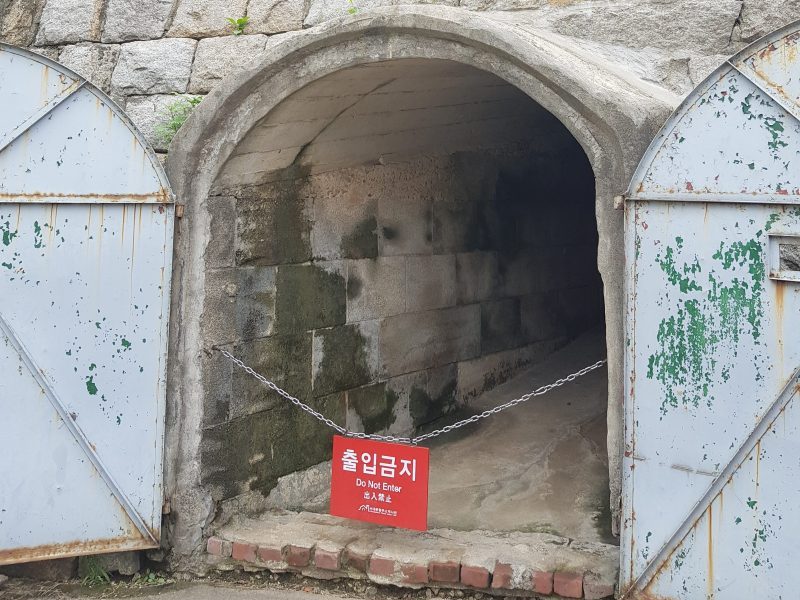
Women’s Prison Building
Seodaemun Prison had a separate facility used to detain female inmates. The prison is similar to the men’s one but in a much smaller size.

Statues of independence fighters Lee Hyo-jeong and Park Jin-hong are displayed inside a women’s prison cell.
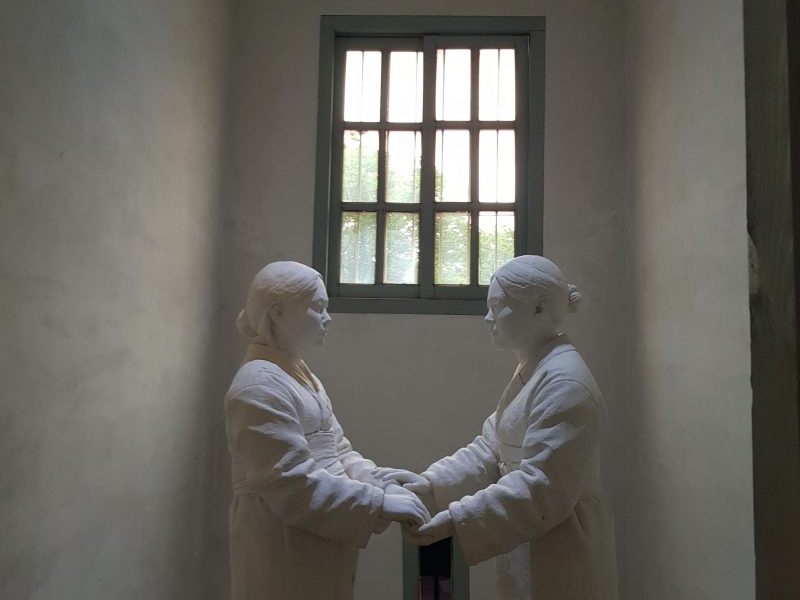
There are also other buildings such as Leper’s Building, Watchtower, Reverence Space, Storage, Kitchen Barrack and Museum Shop here.
The 10-meter-high watchtower has observation windows on its eight sides. There were originally watchtowers but only two remain now.

The Museum Shop sells souvenirs and exhibits past objects from the Kitchen Barrack and Boiler Room.
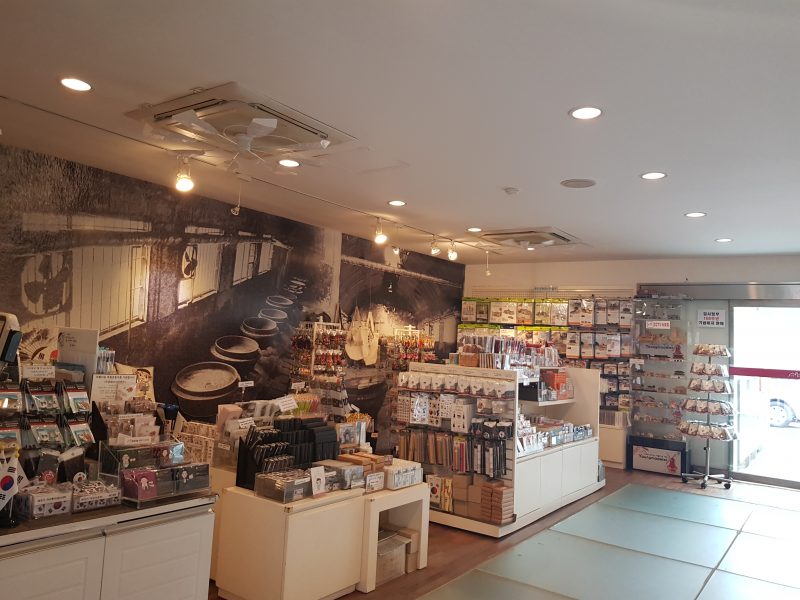
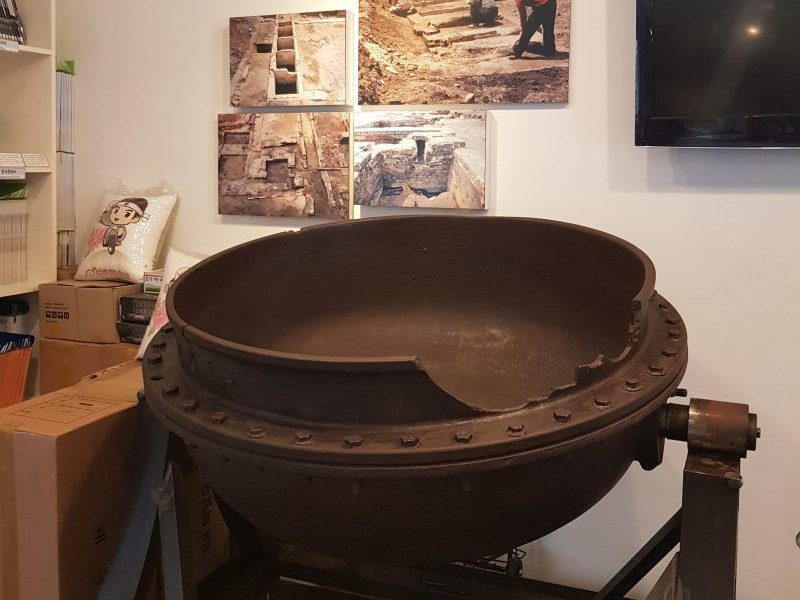
Overall Experience
Those who cannot remember the past are condemned to repeat it.
George Santayana
Seodaemun Prison History Hall represents the suffering of the Korean independence activists for the country independence and democracy. I highly recommend you to pay a visit here if you have keen interest in Korean history. It is a good place for field study and learning. You will be able to gain a lot of knowledge here.
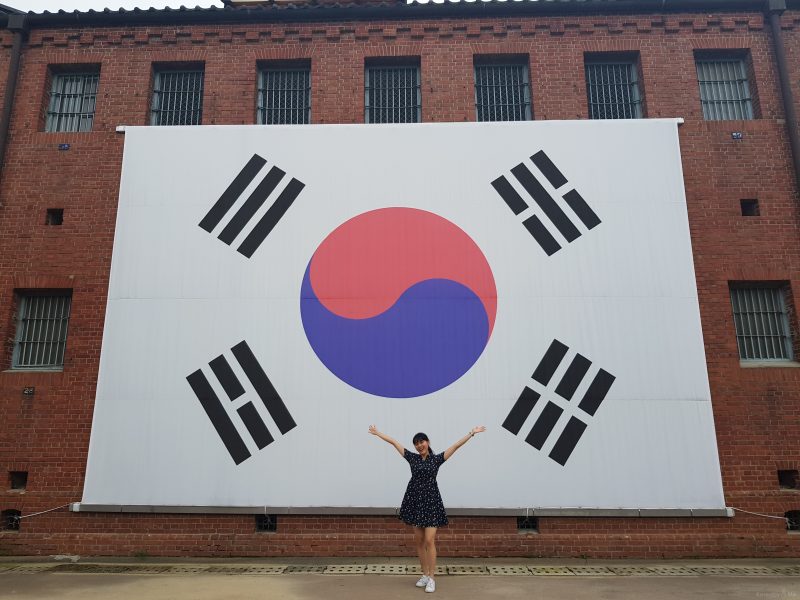
Admission Fee
- Adults: 3000 won
- Teenagers: 1500 won
- Children: 1000 won
How to get there?
Walk out from Dongnimmun Station (Subway Line 3, Exit 2). The Seodaemun Prison History Hall is 7 minutes walking distance from the station.
Address: 251, Tongil-ro, Seodaemun-gu, Seoul. 서울특별시 서대문구 통일로 251 (현저동)
Read More: Reborn into Hongje Yuyeon


